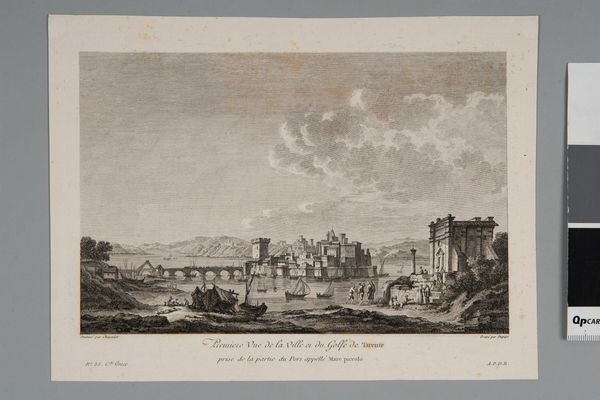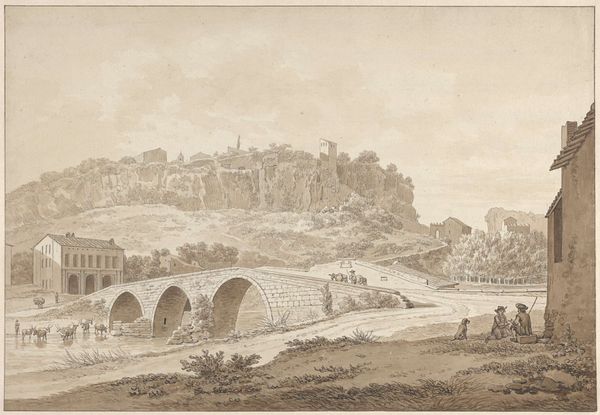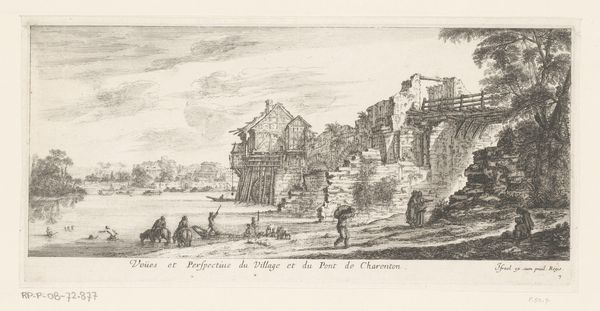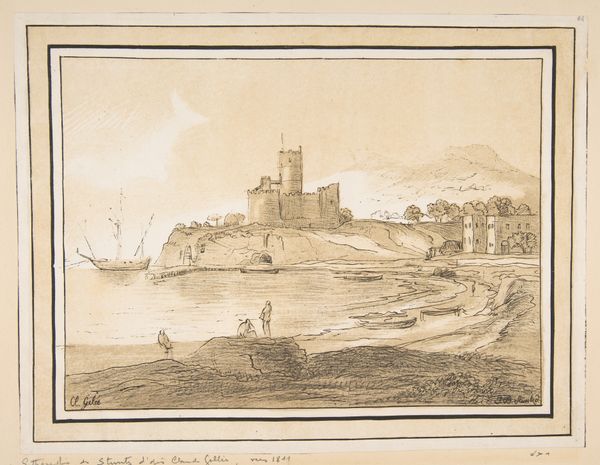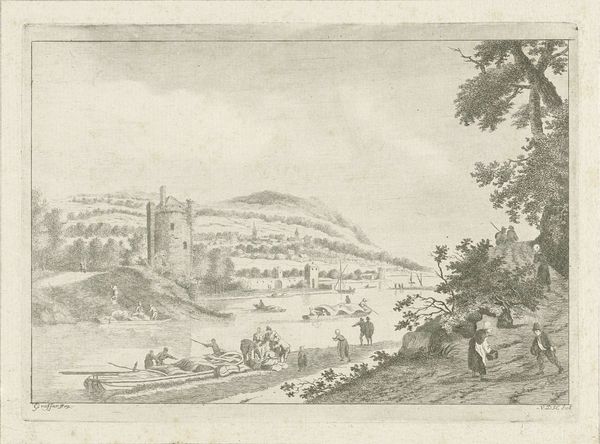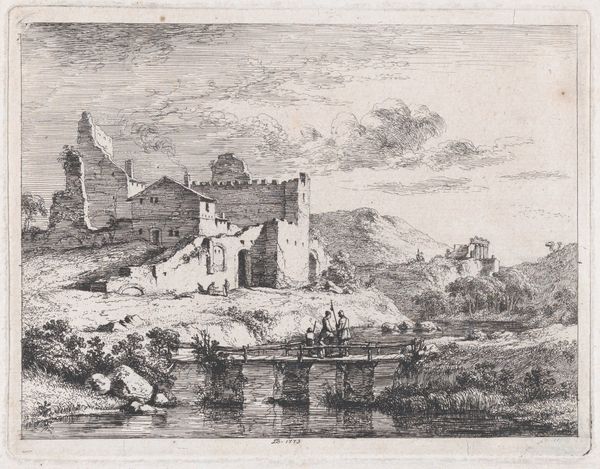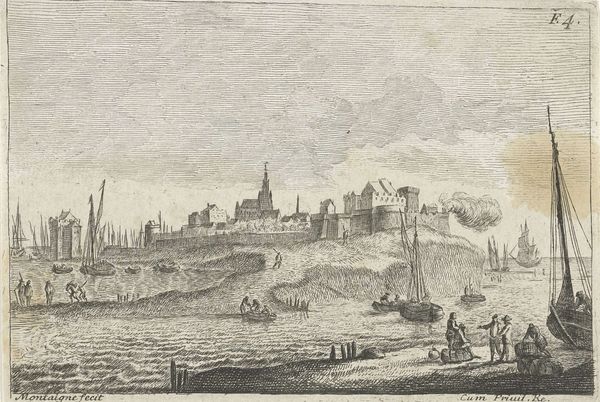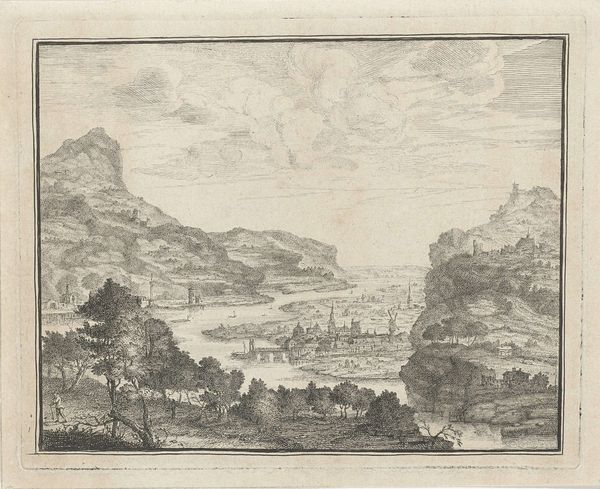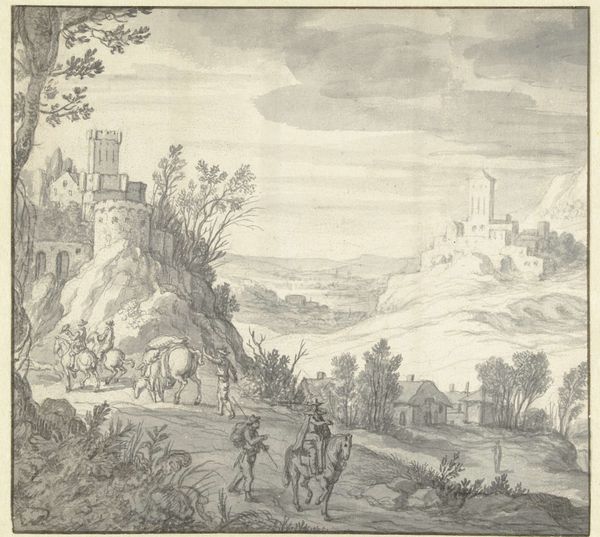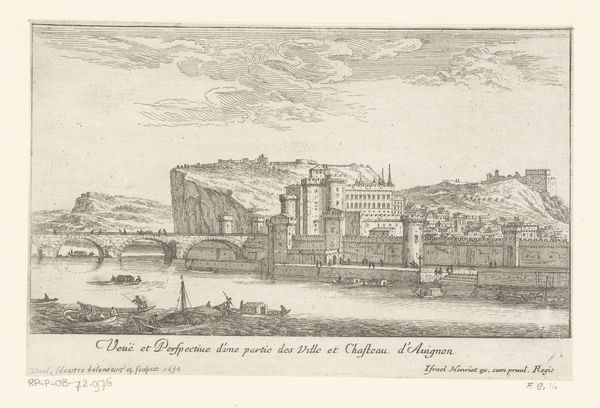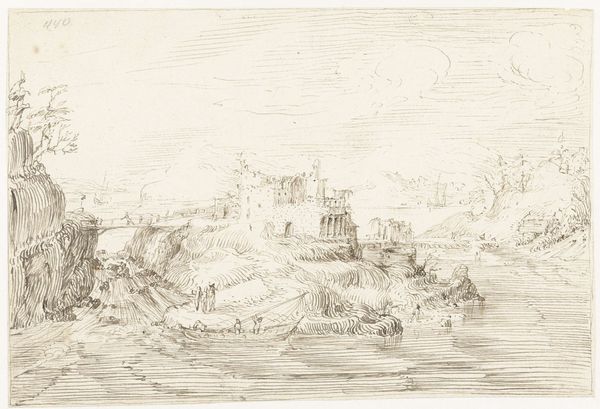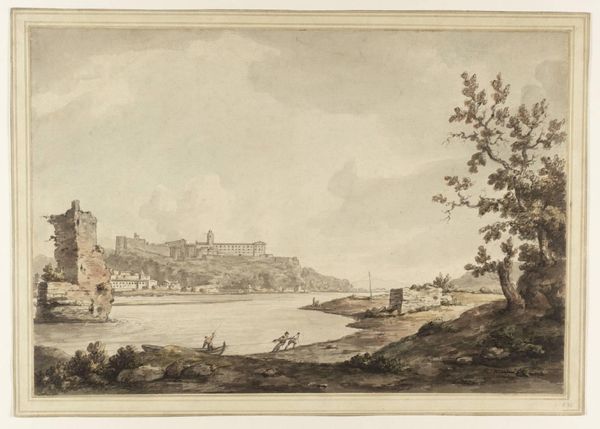
drawing, plein-air, paper, ink
#
drawing
#
baroque
#
plein-air
#
landscape
#
paper
#
ink
#
cityscape
Dimensions: height 225 mm, width 321 mm
Copyright: Rijks Museum: Open Domain
Editor: Here we have Jan de Beijer's "Gezicht op het kasteel te Namen," or "View of the Castle at Namur," created around 1740 using ink on paper. It's fascinating how much detail he achieves with what seems like simple materials. What stands out to you when you look at this drawing? Curator: Immediately, I’m drawn to the implied labor embedded within this image. Consider the material conditions: the cost of paper and ink in the 18th century, the training required to render such precise lines. Then, look at the social stratification represented: the imposing castle versus the active but small figures in the boats, highlighting the power structures of the time. The drawing itself becomes a commodity, reflecting and reinforcing these hierarchies. Editor: So you’re saying the very act of creating this landscape reinforces the social order of the time? Curator: Precisely. The "plein-air" aspect also reveals something – de Beijer went to this location, chose his vantage point, and framed this scene. He's capturing not just a place, but a system, making choices about what to show and what to omit, all mediated by his own social positioning and the market for such images. The consumer of this image would likely have been someone of considerable wealth and social standing, further implicating it in a network of material and economic relationships. How does that resonate with you? Editor: That makes me see the drawing as more than just a pretty picture. It's like a document of its time, reflecting the cost of things, who could afford them, and even how people related to each other. It makes you wonder what stories the materials themselves could tell if they could talk. Curator: Indeed. Looking at art this way connects it to the broader currents of history and economics, revealing a richer and often more complex understanding of its value and significance.
Comments
No comments
Be the first to comment and join the conversation on the ultimate creative platform.
